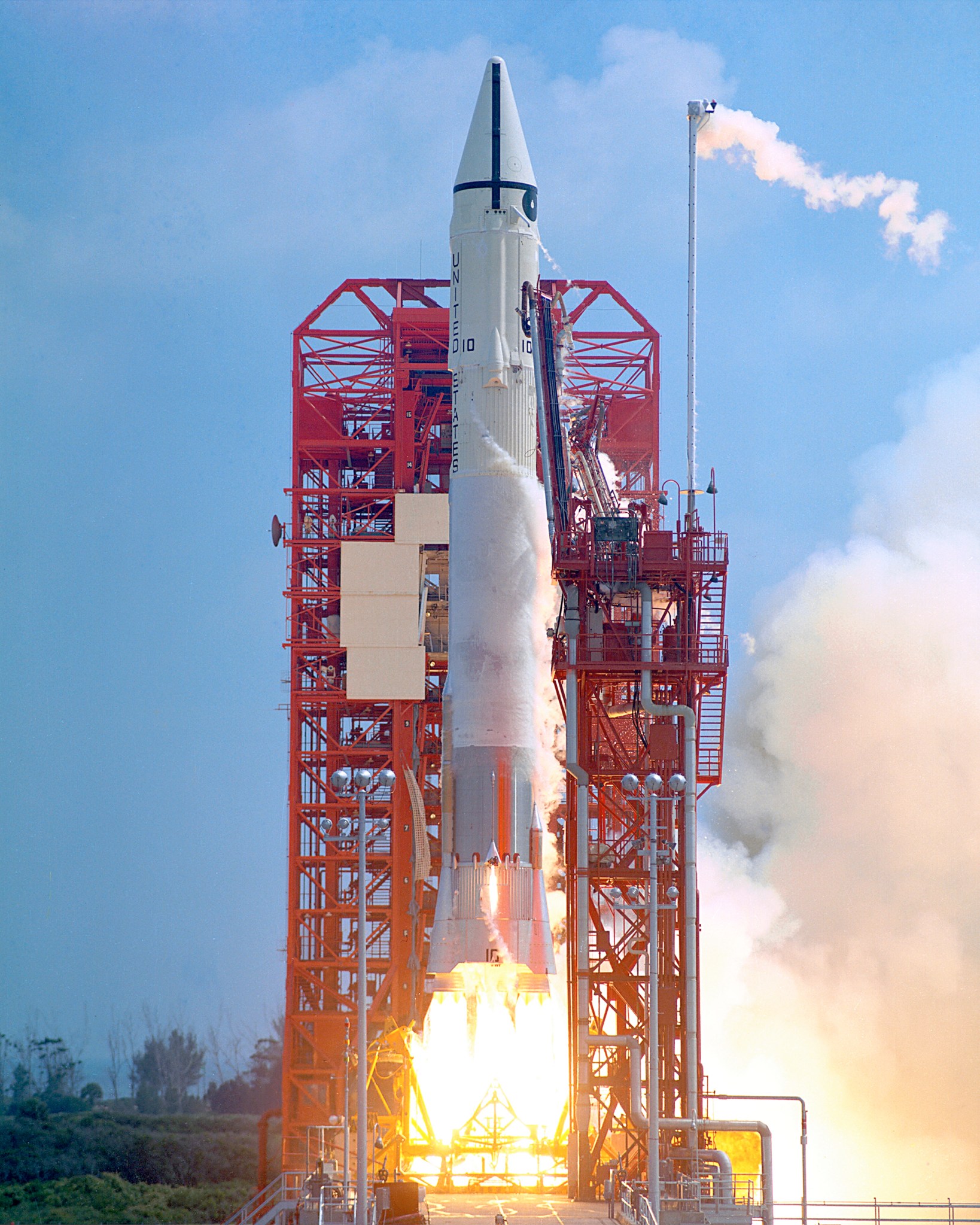The several hundred Lewis Research Center (now NASA Glenn) employees gathered in the cafeteria were just settling down after remotely watching the first Titan-Centaur (TC-1) lift off into the blue Florida sky when a voice on the public address system announced that the range safety officer had destroyed the launch vehicle 12 and a half minutes into the flight. The Pratt & Whitney RL-10 engines on Lewis’s second-stage Centaur rocket had failed to ignite. The room became silent. The failed proof flight destroyed Lewis researcher Robert Lovell’s Space Plasma High Voltage Interaction Experiment (SPHINX) and raised serious concerns with NASA management and researchers at the Jet Propulsion Laboratory (JPL) about the new launch vehicle. They were relying on Titan-Centaur to launch six major interplanetary missions within the next three and a half years, including the $1 billion Viking orbiters and landers.
At the time, Lewis was responsible for all of NASA’s intermediate and large payload launches on expendable launch vehicles, including all missions to other planets. NASA’s involvement with launch vehicles began in October 1962 with the acquisition of the Centaur Program. General Dynamics designed Centaur to be used with an Atlas booster to send the Surveyor spacecraft to the Moon in the mid-1960s to examine sites for the Apollo landings. Centaur was the first space vehicle to use liquid hydrogen, and Lewis research in the 1950s had demonstrated liquid hydrogen’s applicability to rockets.
Lewis’s extensive work on Centaur paid off on May 30, 1966 with the launch of Surveyor 1. Three days later, Surveyor became the first U.S. spacecraft to land on another celestial body. Centaur rockets sent six additional Surveyors to the Moon over the next year and a half.
Lewis created its Launch Vehicle Division in 1969 to oversee the numerous launches planned for the coming years. The division was responsible for addressing all Atlas-Centaur problems, integrating the payload into the launch vehicle, establishing the correct flight trajectories, and preparing the vehicle for launch. The staff worked closely with launch operations at Kennedy Space Center, the exploration engineers at several NASA centers and eventually commercial and military organizations.
Atlas-Centaur’s initial interplanetary missions included the Mariner 6 and 7 (1969) flybys of Mars; Mariner 9 (1971) to Mars, which was the first spacecraft to orbit another planet; and Pioneer 10 (1972), which was the first spacecraft to visit Jupiter and the first to exit the solar system.
Meanwhile, Lewis worked with General Dynamics to update Centaur with a new computer system and an equipment module to attach the new electronics. In 1973, this new Centaur D-1A sent Pioneer 11 by Jupiter before it exited the solar system and launched Mariner 10, which was the first spacecraft to use the gravitation pull of a planet (Venus) to reach another (Mercury).
NASA planned even more complex missions for the mid-1970s that would require an even larger booster than the Atlas. The Air Force’s three-stage Titan 3E was selected, and General Dynamics altered the Centaur D-1A to serve as the Titan’s fourth stage. The most significant modification was the use of an entirely new shroud, which was wider than both the Centaur and Titan. This Centaur Standard Shroud underwent aerodynamic tests in the 8-by-6-foot Supersonic Wind Tunnel and full-scale separation and pressurization testing at Plum Brook Station.
There was tremendous disappointment following the loss of the first Titan-Centaur in February 1974. NASA and General Dynamics engineers concluded that the failure of Centaur’s liquid-oxygen boost pumps was not unique to the Titan-Centaur and could have occurred on any of the previous Atlas-Centaur missions. All of the critical interface issues between Titan and Centaur had been demonstrated, so no additional test flight was required.
Tensions were relieved eight months later with Titan-Centaur’s successful launch of the German spacecraft Helios 1, which made the closest pass to the Sun to date. The twin Viking launches were less than a year away, however. There was an additional layer of stress added by the requirement to launch both vehicles within 10 days of one another from the same pad. The first Viking was launched on August 20, 1975. A delay with the second Viking spacecraft, however, pushed back its launch date until September 9 . The Titan, Centaur, and Centaur Standard Shroud performed perfectly on both launches. The orbiters and landers arrived on Mars in July and September 1976, respectively.
Another Titan-Centaur sent Helios 2 toward the Sun in January 1976. Preparations for the two Voyager launches in August 1977 then began in earnest. Like Viking, these were to be launched from the same pad within 10 days. Voyager 2 departed Earth’s atmosphere on August 20, 1977, and the launch team was able to get Voyager 1 up in 16 days. The Voyagers investigated Jupiter, Saturn (Voyager 2 also studied Uranus and Neptune), and 48 of their moons before leaving the solar system. Atlas-Centaurs launches of Pioneers 12 and 13 toward Venus in 1978 brought Centaur’s whirlwind decade of inter-planetary planetary missions to a close.
Centaur maintained a busy schedule launching satellites in the 1970s and 1980s, but NASA had difficulty funding interplanetary missions. In the 1990s, NASA began partnering with the European Space Agency for new planetary spacecraft. The first, the Solar Heliospheric Observatory (SOHO), was launched on an Atlas-Centaur in December 1995 to conduct in-depth studies of the Sun. The Cassini-Huygens launch on October 15, 1997 was one of the Centaur program’s largest and most significant missions.
The Cassini orbiter and Huygens probe arrived at Saturn in 2004. Huygens landed on Saturn’s largest moon, Titan, in 2005 and became the first spacecraft to land on an object in the outer solar system. The Cassini launch brought an end to Glenn’s management of NASA’s interplanetary launches. NASA decided to consolidate Lewis and Goddard’s launch vehicle programs with Kennedy’s. During its 35 years in the business, Lewis managed the launches of 17 interplanetary missions, 14 lunar vehicles and scores of satellites.
Robert S. Arrighi
NASA’s Glenn Research Center































